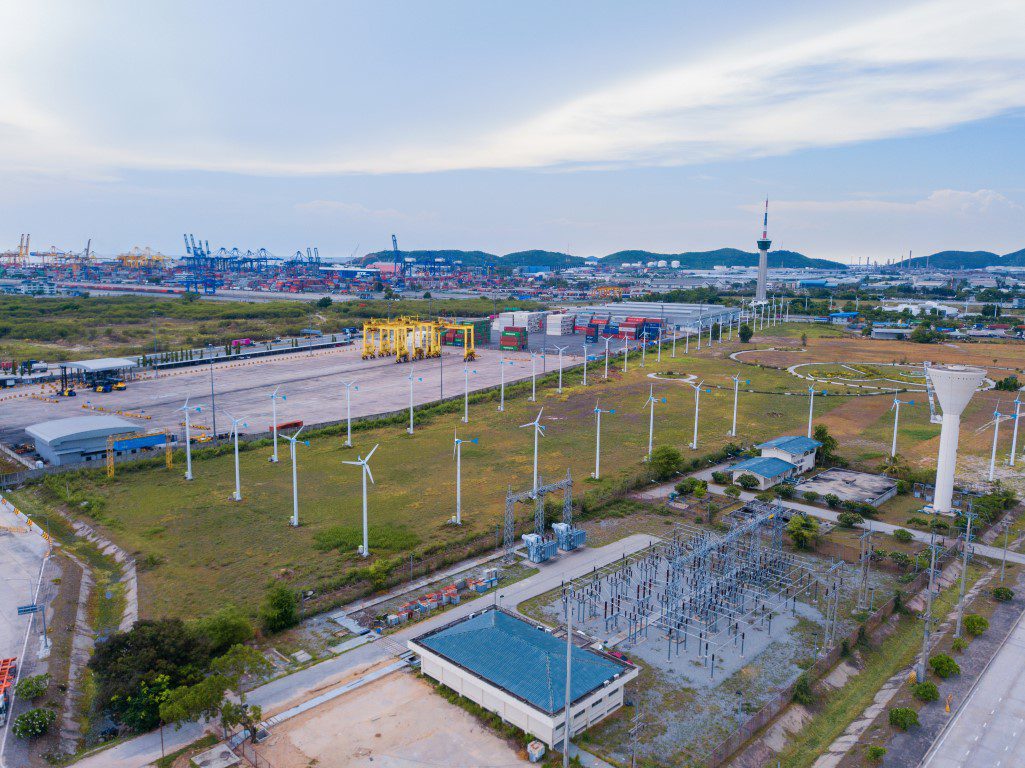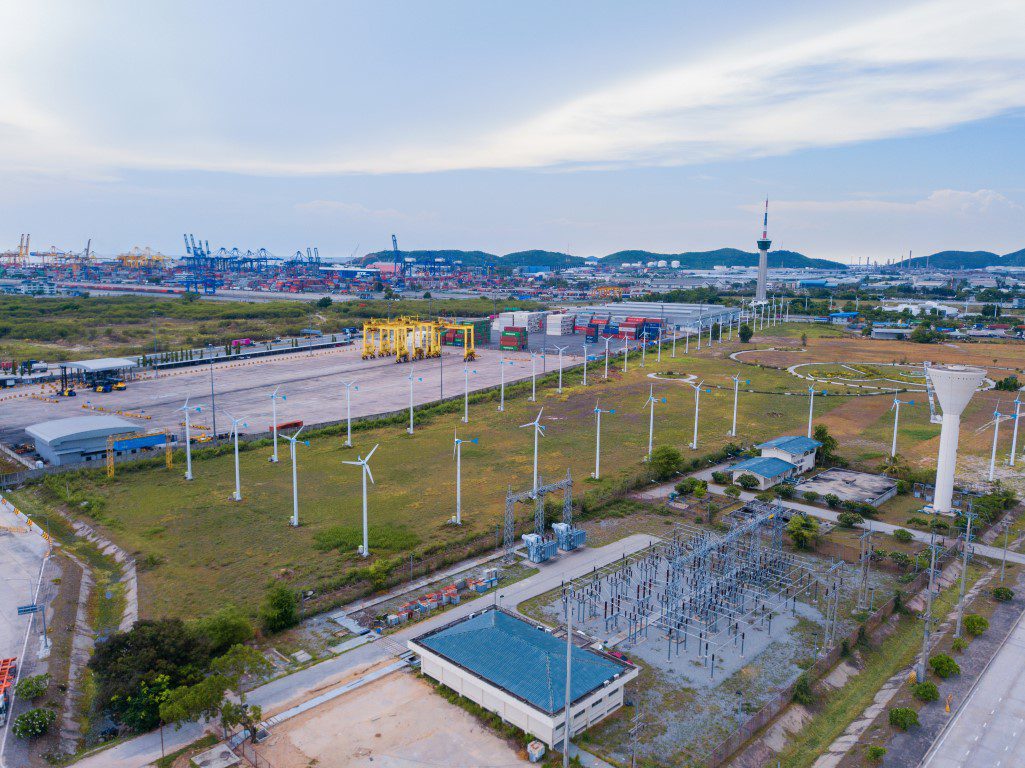Green logistics encompasses any commercial practice that minimizes the environmental impact of the logistics network and delivery.
That being said, sustainable logistics, or green logistics, ensures a solid end result without sacrificing customer satisfaction, all while reducing the environmental impact on the planet.
For companies looking at implementing a more eco-friendly logistics within their operations, it’s essential to adopt the use of technology, such as artificial intelligence, machine learning and advanced analytics.
This will enable them to make better decisions, based on real-time information and historical data.
 Source: Envato
Source: Envato
As more and more companies make the move towards a more sustainable logistics process, they’ve been able to reap the benefits of doing so within the business, including increased profitability, a better corporate citizenship, and improved customer satisfaction.
However, a key factor is demand; as customers, both businesses and consumers see the results of climate change in the real world through the news, and we’re quickly changing our loyalty to companies that demonstrate significant and permanent steps towards green and sustainable logistics.
With all that in mind, in this first part, we’ll be going over the definition of green logistics, the difference with reverse logistics, and the importance of sustainable logistics and its goals.
What is Green Logistics and what does it encompass?
Green logistics refers to sustainable policies that minimize the environmental impact and emissions from logistical activities.
This encompasses companies within the supply chain taking actions to reduce the carbon footprint of operational processes, such as packaging, recycling, transportation, as well as the coordination of storage of goods and waste disposal.
Difference between Green Logistics and Reverse Logistics
Reverse logistics refers to a product traveling back through the supply chain to its original source of manufacture. However, reverse logistics is not always sustainable nor does it help in reducing emissions.
For instance, a company may deliver a new electronic device to a customer and reclaim the old one for the company to recycle; in that case, while such movement is eco-friendly, it's not necessarily considered to be eco-friendly logistics -despite the recycling of the old product - due to the transportation process not being organized sustainably.
An example of green logistics would be transportation that reduces emissions. For example, planning a route with multiple stops (pick-ups and returns) during a delivery flow.
What is Green Logistics in Transportation?
Green logistics and transportation form a significant portion of the supply chain. In addition to procuring eco-friendly vehicles, green logistics in transportation entails reducing emissions through the implementation of route optimization software.
Delivery optimization tools, such as Drivin software, plot the most efficient routes and aid in fuel cost savings. This leads to not only improved fleet management, but also a reduction in carbon emissions.
Advancing towards a more environmentally conscious logistics in transportation is a pressing issue, as the transportation sector constitutes roughly 27% of greenhouse gas emissions in the United States.
The importance of Green Logistics
Green logistics holds a paramount position in the global economy. Nevertheless, due to the highly polluting nature of transportation that plays a critical role in the supply chain, the logistics sector also has a substantial impact on the environment.
 Source: Envato
Source: Envato
Before Covid-19, there was a growing demand for e-commerce delivery. According to the World Economic Forum (WEF), such deliveries will result in a 36% increase in delivery vehicles in city centers by 2030, thereby exacerbating traffic congestion.
However, there is always a glimmer of hope. The organization also presented examples of environmental logistics aimed at reducing CO2 pollution by 30% and delivery costs by 25% by 2030.
Advantages of Green Logistics
At this point, you’re likely pondering the implementation of green logistics in supply chain management. Therefore, we present you with some of its tangible benefits in real-world scenarios.
Reduction in transportation costs
By focusing on sustainable transportation, costs can be curtailed by reducing the time and mileage used in the delivery of the same amount of shipments; hence, transitioning from a conventional logistics company to a green logistics company curtails transportation expenses in the long run.
How is the transition to green logistics achieved? This is accomplished by employing a route optimization tool such as the one companies like Drivin offer.
- Lower fuel consumption per route,
- Lower fuel consumption per driver,
- Reduction in time and distance to destination,
- Absence of off-route mileage.
Supply and Energy Costs
Measuring efficiency through a top-notch delivery management software are excellent ways of grappling with the never-ending increase in supply, energy and transportation costs.
The mounting burden of energy costs and supply expenses imply that supply chain managers must re-evaluate their distribution plans. Fortunately for green logistics management, the gap between sustainable procurement and lower cost is dwindling.
Fostering Optimal Customer Relations
Failure to adopt environmentally friendly practices within the supply chain through green logistics will render one laggard in the logistics industry in the years to come.
Sustainable logistics can be leveraged to win over customers. End-users are becoming increasingly environmentally conscious and expect the companies whose services they utilize to follow suit. Even, many are willing to pay a premium for more sustainable products and deliveries.
Preparation for Regulations
The earlier one begins to apply green logistics actions in their logistics operations, the better equipped they’ll be for upcoming regulations and policies centered on sustainability.
Embracing a proactive approach to stay ahead of environmental regulations and allowed CO2 levels grants companies ample time to prepare and implement changes to their operations. Thus, implementing environmental logistics means staying one step ahead of the competition.
Finally, green logistics does not have to equate to spending hundreds of thousands of dollars to replace your fleet. Instead, utilizing Drivin's route optimization software helps reduce inefficiencies within your company. Intelligent and optimized routing leads to fewer trucks on the road, and those trucks driving more efficient routes.
If you want to learn more about green logistics and its applications, continue reading our complete Green Logistics Guide - Part 2.

.jpg)
.jpg)
